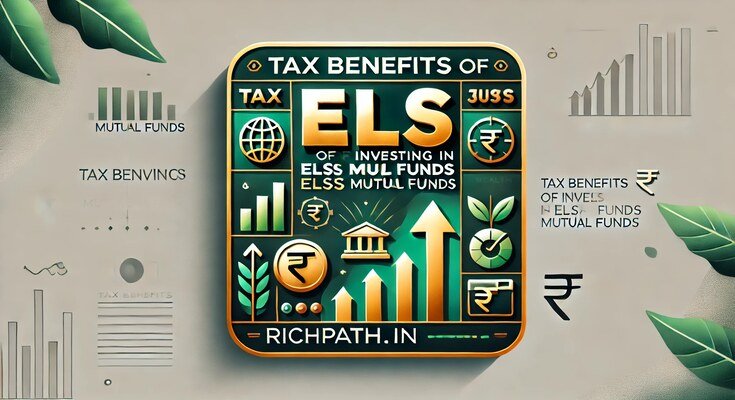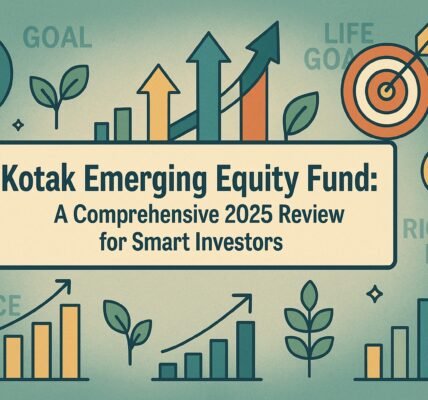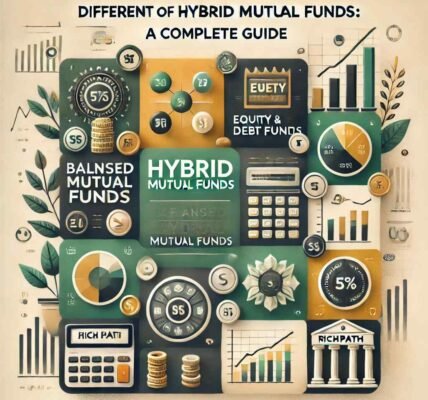Tax Benefits of Investing in ELSS Mutual Funds

Tax Benefits of Investing in ELSS: A Smart Way to Save and Grow Wealth
Tax-saving is a crucial part of financial planning, and tax benefits of investing in ELSS make it a highly attractive option for Indian investors. Equity Linked Savings Schemes (ELSS) offer the dual advantage of tax savings under Section 80C and potential long-term wealth creation through equity investments.
This article explores the tax benefits of investing in ELSS, how it compares to other tax-saving options, and why it’s a smart choice for investors looking to optimize their financial portfolios.
What Are ELSS Mutual Funds?
Equity Linked Savings Schemes (ELSS) are diversified equity mutual funds that come with tax benefits under Section 80C of the Income Tax Act. These funds primarily invest in equities and equity-related instruments, offering market-linked returns with a mandatory three-year lock-in period.
Key Features of ELSS
- Tax Deduction: Investments up to ₹1.5 lakh qualify for tax benefits under Section 80C.
- Shortest Lock-in Period: Only 3 years, compared to other tax-saving investments.
- High Return Potential: Equity exposure helps in long-term wealth creation.
- SIP and Lump Sum Options: Investors can invest in ELSS through Systematic Investment Plans (SIPs) or a lump sum.
- Long-Term Capital Gains (LTCG) Tax: Gains above ₹1 lakh are taxed at 10%.
Tax Benefits of Investing in ELSS
1. Deduction Under Section 80C
One of the biggest tax benefits of investing in ELSS is the deduction of up to ₹1.5 lakh under Section 80C. This deduction lowers taxable income, reducing overall tax liability.
Example:
- Rohan has a taxable income of ₹10 lakh.
- By investing ₹1.5 lakh in ELSS, his taxable income reduces to ₹8.5 lakh.
- If he falls under the 20% tax bracket, he saves ₹30,000 in taxes.
2. Tax-Free Gains Up to ₹1 Lakh
ELSS investments generate long-term capital gains (LTCG), which are tax-free up to ₹1 lakh per financial year. Gains above this limit are taxed at 10% without indexation benefits.
Example:
- Rahul invests ₹1.5 lakh in ELSS, and after 3 years, his investment grows to ₹2.5 lakh.
- His total LTCG is ₹1 lakh (₹2.5 lakh – ₹1.5 lakh).
- Since LTCG up to ₹1 lakh is tax-free, Rahul pays zero tax.
3. No Tax on Dividends
If an investor chooses the growth option, all returns are reinvested and taxed as LTCG only when redeemed. In contrast, under the dividend option, any dividends received are taxed at the investor’s slab rate.
ELSS vs. Other Tax-Saving Investments
| Feature | ELSS | PPF (Public Provident Fund) | NSC (National Savings Certificate) |
|---|---|---|---|
| Lock-in Period | 3 years | 15 years | 5 years |
| Returns | Market-linked (10-15%) | Fixed (7-8%) | Fixed (~7%) |
| Risk Level | Moderate to High | Low | Low |
| Tax on Returns | LTCG tax (above ₹1 lakh) | Fully tax-free | Interest is taxable |
| Liquidity | High | Low | Medium |
Clearly, tax benefits of investing in ELSS come with the shortest lock-in period and higher return potential compared to traditional instruments.
Advantages of ELSS for Indian Investors
1. High Return Potential
Since ELSS invests in equities, historical returns range between 12-15%, significantly higher than fixed-income tax-saving options like PPF and NSC.
Example: For Tax Benefits of Investing in ELSS
- Investment: ₹1.5 lakh annually in ELSS for 10 years.
- Assumed Returns: 12% annually.
- Maturity Amount: ₹30 lakh.
2. Shortest Lock-in Period
With just 3 years, ELSS has a shorter lock-in than PPF (15 years) or NSC (5 years), making it more liquid while still offering tax benefits.
3. SIP Option for Flexibility
Unlike PPF or NSC, investors can invest in ELSS through SIPs, starting with as little as ₹500 per month. This promotes disciplined savings while optimizing tax benefits.
4. Professional Fund Management
ELSS funds are managed by expert fund managers, who actively diversify investments across sectors to maximize returns.
Risks of Investing in ELSS
1. Market Volatility
Being equity-based, ELSS returns fluctuate based on market conditions. Long-term investment minimizes short-term risks.
2. Lock-in Period Restriction
Investors cannot withdraw before 3 years, unlike liquid funds or fixed deposits.
3. Potential Capital Losses
Since ELSS investments are market-linked, there is a risk of losses if markets underperform. However, a long-term horizon reduces this risk.
How to Choose the Best ELSS Fund
- Analyze Past Performance: Look at 5-10 year returns rather than short-term performance.
- Expense Ratio: Choose funds with a low expense ratio to maximize net returns.
- Fund Manager’s Track Record: Evaluate the fund manager’s experience and investment style.
- Portfolio Diversification: Opt for funds diversified across sectors for reduced risk.
How to Invest in ELSS Mutual Funds
- Choose a Fund: Compare different ELSS funds based on performance and expense ratio.
- Decide Investment Mode: SIP or Lump Sum—SIP is ideal for new investors.
- Complete KYC Process: Submit PAN, Aadhaar, and bank details online or offline.
- Invest Through Trusted Platforms: Use Groww, Zerodha, Coin, or AMCs’ websites.
Why ELSS is a Smart Tax-Saving Choice (Tax Benefits of Investing in ELSS)
- Dual Benefits: ELSS combines tax benefits with wealth creation.
- Inflation-Beating Returns: Unlike fixed deposits or PPF, ELSS has the potential to outpace inflation.
- Flexibility: SIP options allow investors to start small and invest consistently.
Conclusion: Tax Benefits of Investing in ELSS
The tax benefits of investing in ELSS make it one of the most efficient and rewarding tax-saving options for Indian investors. It not only reduces tax liability under Section 80C but also builds wealth through equity exposure.
For expert financial insights, visit Rich Path. and start your investment journey today! 🚀
Read more –
Top 5 Mutual Funds for Long-Term Growth in India in 2025
Best Mutual Funds: How to Choose – A Complete Guide
Best Flexi Cap Mutual Funds to Invest in 2025
Disclaimer
This article is for informational purposes only and should not be considered financial advice. Mutual fund investments are subject to market risks, and past performance does not guarantee future returns. Please consult a certified financial advisor before making investment decisions.








